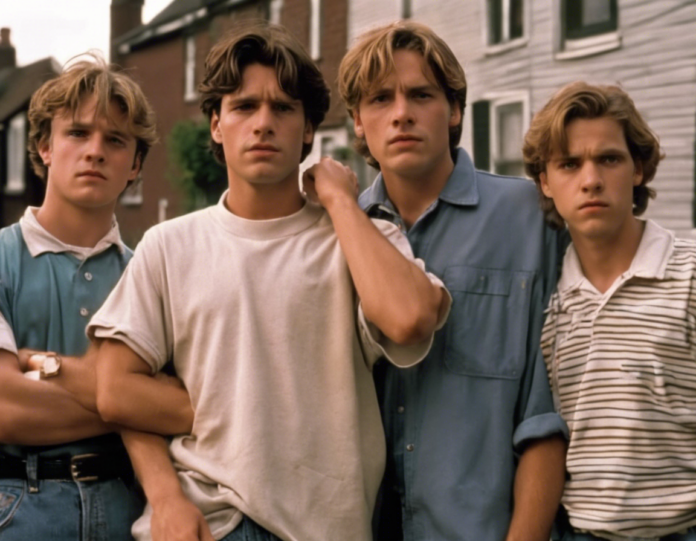Introduction
The 1990s was a unique era that brought about significant changes in various aspects of society, including the rise of the middle class. This period saw a shift in cultural norms, technological advancements, and economic growth that significantly impacted the lives of the middle class. A biopic set in the 90s would provide a nostalgic journey into the lives of middle-class individuals during this transformative decade.
Defining the Middle Class in the 90s
The middle class in the 90s was characterized by stability, economic prosperity, and a focus on material possessions. This demographic segment typically consisted of individuals and families with moderate incomes, white-collar jobs, and aspirations for a comfortable lifestyle. The 90s marked a period where the middle class saw an increase in purchasing power, homeownership, and access to consumer goods.
Cultural Influences
The cultural landscape of the 90s played a significant role in shaping the lives of the middle class. From iconic TV shows like “Friends” and “The Fresh Prince of Bel-Air” to popular music genres like grunge and hip-hop, the 90s were a time of cultural diversity and creativity. The fashion trends of the 90s, including flannel shirts, mom jeans, and platform sneakers, reflected the laid-back and casual style embraced by the middle class.
Technological Advancements
The 1990s were a period of rapid technological advancements that revolutionized the way people lived and worked. The internet became widely accessible, leading to the proliferation of email, online shopping, and information sharing. Mobile phones also became more prevalent, offering individuals greater connectivity and convenience. These technological innovations not only transformed daily life but also impacted how the middle class interacted with the world around them.
Economic Prosperity and Challenges
The 90s were marked by economic prosperity for many middle-class individuals, thanks to a booming stock market, low unemployment rates, and increased opportunities for upward mobility. However, this period also saw the digital revolution and the outsourcing of jobs, leading to economic uncertainty for some members of the middle class. The dot-com bubble burst in the late 90s, causing many to face financial challenges and job losses.
Family Dynamics
Family dynamics in the 90s were evolving, with an increasing number of dual-income households and a focus on work-life balance. The middle-class families of the 90s juggled career aspirations with family responsibilities, often finding themselves torn between professional success and quality time with loved ones. The portrayal of these struggles in a 90s biopic would capture the essence of this transformative period for middle-class families.
Social Issues
The 90s were a time of significant social change, with movements focused on diversity and equality gaining momentum. The middle class played a key role in advocating for social justice and equality, with issues such as gender equality, racial justice, and LGBTQ rights coming to the forefront. A biopic set in this era could explore how middle-class individuals navigated these social issues and their impact on daily life.
Conclusion
A middle-class 90s biopic would offer a poignant and nostalgic look into a transformative decade that shaped the lives of many. From cultural influences and technological advancements to economic prosperity and social issues, the 90s were a time of change and evolution for the middle class. By delving into the lives of middle-class individuals during this era, a biopic could capture the essence of a generation that strived for success, balance, and a sense of community in the midst of rapid change.
Frequently Asked Questions (FAQs)
1. What defined the middle class in the 1990s?
– The middle class in the 90s was characterized by stability, economic prosperity, and a focus on material possessions. Individuals and families with moderate incomes, white-collar jobs, and aspirations for a comfortable lifestyle were part of this demographic segment.
2. How did cultural influences shape the lives of the middle class in the 90s?
– The cultural landscape of the 90s, with iconic TV shows, popular music genres, and fashion trends, played a significant role in shaping the lives of the middle class. These cultural influences reflected the diversity and creativity of the era.
3. What technological advancements were prevalent in the 1990s?
– The 90s were marked by rapid technological advancements, including the widespread adoption of the internet, mobile phones, and digital innovations. These technologies revolutionized how people lived, worked, and connected with one another.
4. What were some economic challenges faced by the middle class in the 90s?
– While the 90s were a period of economic prosperity for many middle-class individuals, challenges such as the dot-com bubble burst and job outsourcing led to financial uncertainty for some. The era saw a mix of economic opportunities and challenges for the middle class.
5. How did family dynamics evolve in the 1990s for the middle class?
– Family dynamics in the 90s saw an increase in dual-income households and a focus on work-life balance. Middle-class families juggled career aspirations and family responsibilities, highlighting the changing roles and responsibilities within households.
6. What social issues were prominent for the middle class in the 90s?
– The 90s were a time of social change, with movements focused on diversity, equality, and social justice gaining momentum. Issues such as gender equality, racial justice, and LGBTQ rights were prominent concerns for the middle class during this era.
